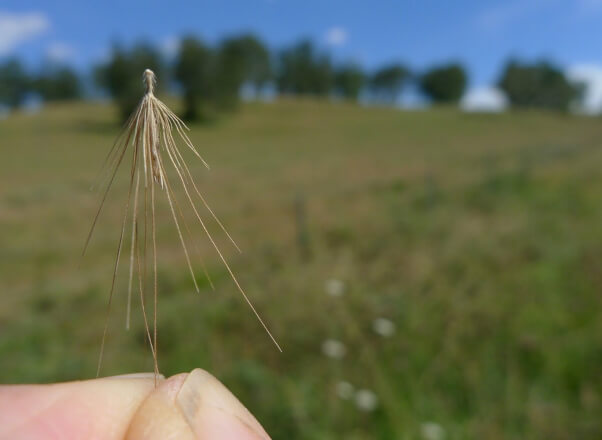How a Hike Almost Turned Deadly for My Dog
One afternoon, I was walking in a semi-wooded area in Pasadena, California, with my dog, Lily, when, after sniffing the ground like dogs do, she started sneezing uncontrollably. She crinkled her nose in an odd way and heaved her whole body in endless, violent sneezes. I frantically did a quick Google search and discovered that a possible culprit could be foxtails, the barbed seed heads of a grass that grows primarily in the western U.S. To test for foxtails (or something else lodged in the nasal cavity), I read that you should press gently on one side of the dog’s nose. If this causes the dog to have another sneezing fit, you should rush the dog to the vet right away.

She sneezed again, and I grabbed my car keys. Within an hour, we were at the vet’s office, and Lily was being sedated so that the foxtail could be removed. Time was of the essence, since inhaled foxtails can potentially travel all the way to the brain, where they can be fatal.

A few weeks later, I noticed that Lily was shaking her head a lot, something she had been doing on and off since I had adopted her a few weeks before she snorted up the foxtail. I had initially put this down to a nervous tic, since she had been severely confined before I adopted her, but now I wondered if it might not be an undiagnosed ear infection that she had developed during her “previous life.” I took her back to the vet for another exam. And astonishingly, there they were—nine foxtails lodged in her ear canals, some just millimeters away from puncturing her eardrums. Many were coated in grunge, indicating that they’d been in there for a long time, and as a result, her ears had become infected. Even after the foxtails were removed, she needed a three-week course of antibiotics. I hate to think of how much pain she had been in all that time without my realizing it.

Foxtails can become embedded in dogs’ eyes, ears, mouths, noses, toes, fur, and skin. They always migrate inward and must be removed. Dogs with long fur and long, floppy ears are more susceptible, as are short stocky dogs like Lily whose heads are right at foxtail level. Symptoms include sneezing, head-shaking, red and/or weeping eyes, inflamed skin, and licking of the affected area. Foxtails can burrow into the dog’s body and reach the spine and internal organs, including the brain and lungs.
You can help prevent your dog from getting foxtails by not allowing him or her to run through overgrown, scrubby areas, especially during foxtail season (usually May through December—but sometimes even longer during droughts). Remove any foxtail grass growing in your yard. When out hiking, stick to fire roads and wooded areas, as opposed to meadows, where foxtail grasses grow. Check your dog thoroughly (including inside the ears and mouth) after coming back from walks, and immediately remove visible foxtails with tweezers. If your dog shows any symptoms indicating that he or she has a foxtail embedded somewhere, get to the vet immediately before the barbs do more damage.


